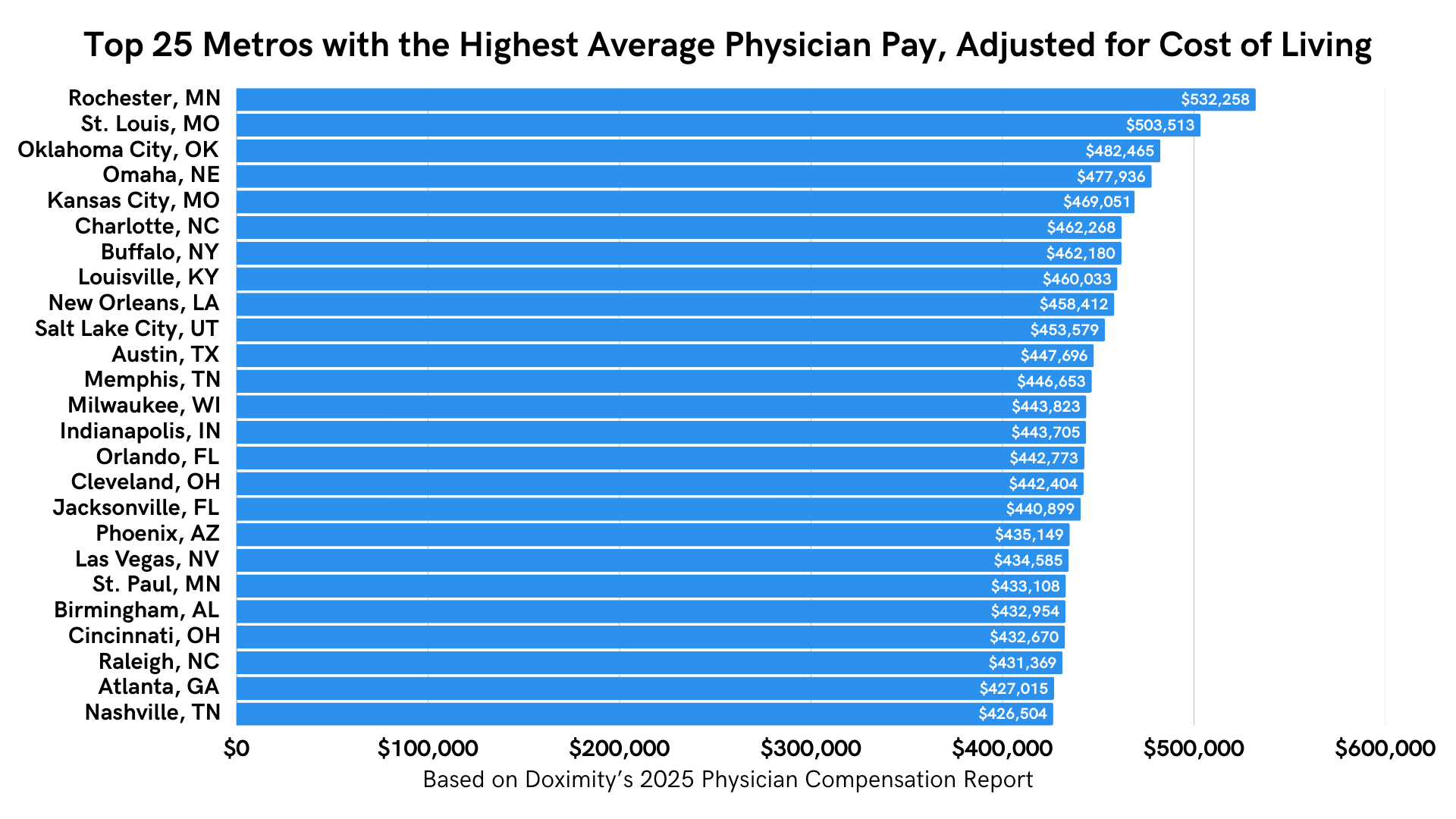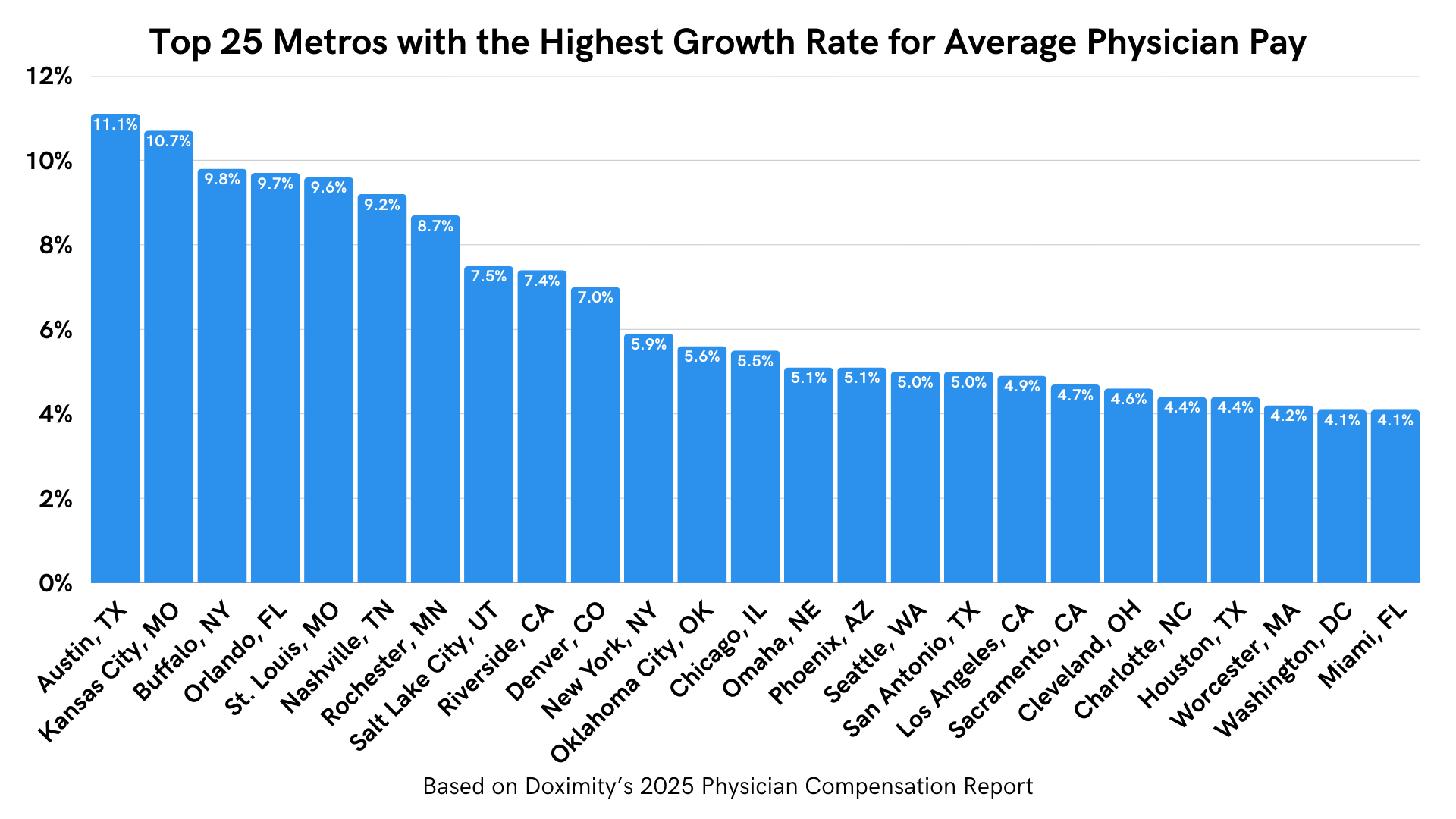Metros in the Midwest ranked among the highest paying and most affordable areas for physicians to work in 2024, according to Doximity’s 2025 Physician Compensation Report.
The Midwest had the top two metros with the highest average pay for physicians — Rochester, Minnesota ($495,532) and St. Louis ($484,883) — beating out big markets like Los Angeles ($470,198) and New York ($435,986) that tend to offer relatively high total compensation.
A medium-sized market anchored by a leading medical system, Rochester’s average physician compensation was $495,532 per year. This was more than $10,000 higher than compensation in the next highest paying metro and significantly above the $429,808 average across all physicians.
Economic uncertainty in recent years has heightened awareness of cost-of-living considerations, even for high-earning physicians. Yet after factoring in the cost of living, both Rochester (with an average adjusted physician pay of $532,258) and St. Louis ($503,513) were still the top two most affordable metros for physicians. The next three most affordable metros were also located in the Midwest: Oklahoma City; Omaha, Nebraska; and Kansas City, Missouri.
Doximity’s Compensation Report is based on surveys of more than 230,000 full-time, practicing U.S. physicians, covering 60 of the largest metropolitan statistical areas.

Nearly all of the 25 most affordable metros were located in the Midwest and South. In addition, most of the metros that saw the highest increase in average pay from the prior year are in the Midwest and the South.
Though more densely populated metros in the Midwest, such as Chicago and Columbus, Ohio, offered lower cost-of-living-adjusted pay than medium-sized Midwest metros, most of them were still more affordable than many metros in the East and West Coasts.
In general, the metros with the lowest average pay after adjusting for cost of living were concentrated in the East and West Coasts.
The least affordable metros were Boston and Washington, DC, which were both in the bottom two the prior year. The higher living expenses of these and similarly expensive metros like Seattle, San Francisco, and Denver meant lower physician spending power despite relatively high total pay.
Still, average physician compensation increased in nearly all of the 60 metros examined. Compensation went up by at least 3% in two-thirds of these metros — practically matching the inflation rate reported in the U.S. Bureau of Labor Statistics’ Consumer Price Index (CPI) in 2024. Metros that saw the highest growth were spread out across the U.S., with all four major regions represented in the top 10.

Overall, the findings suggest that medium-sized markets in the Midwest and South currently may better serve physicians seeking to optimize their compensation. Working in a location with higher spending power could improve physicians’ ability to pay back educational loans, grow their investments, or raise their standard of living.
Feature image: Shutterstock







